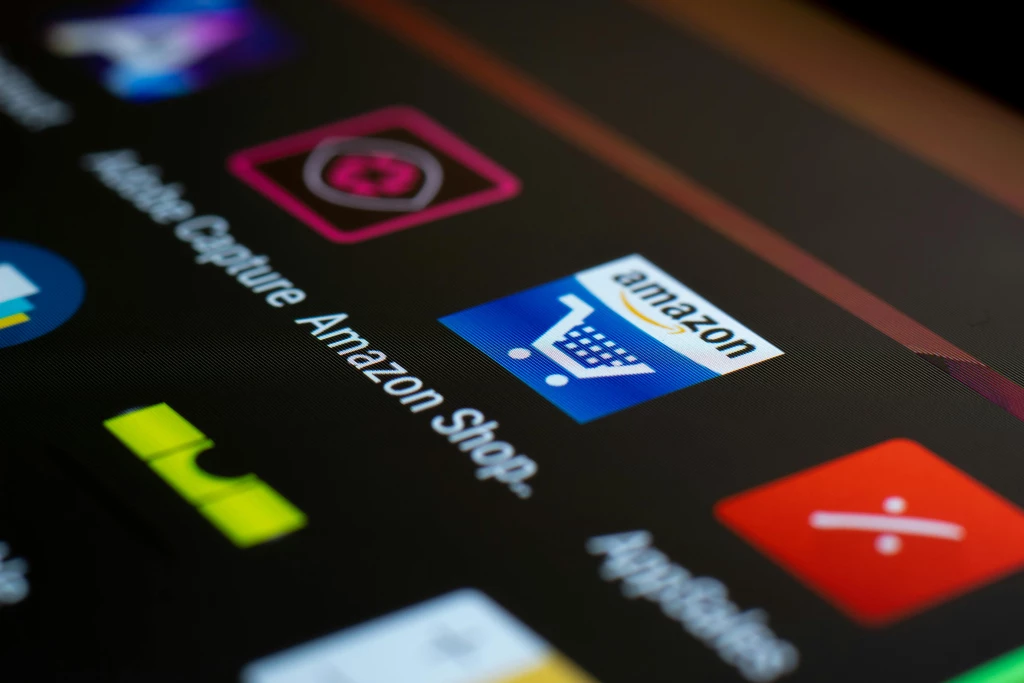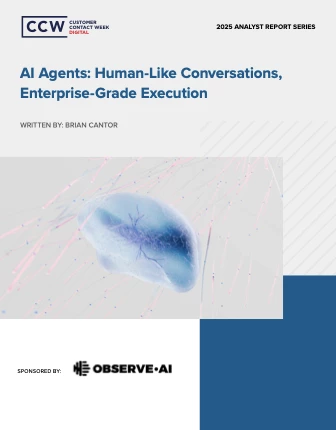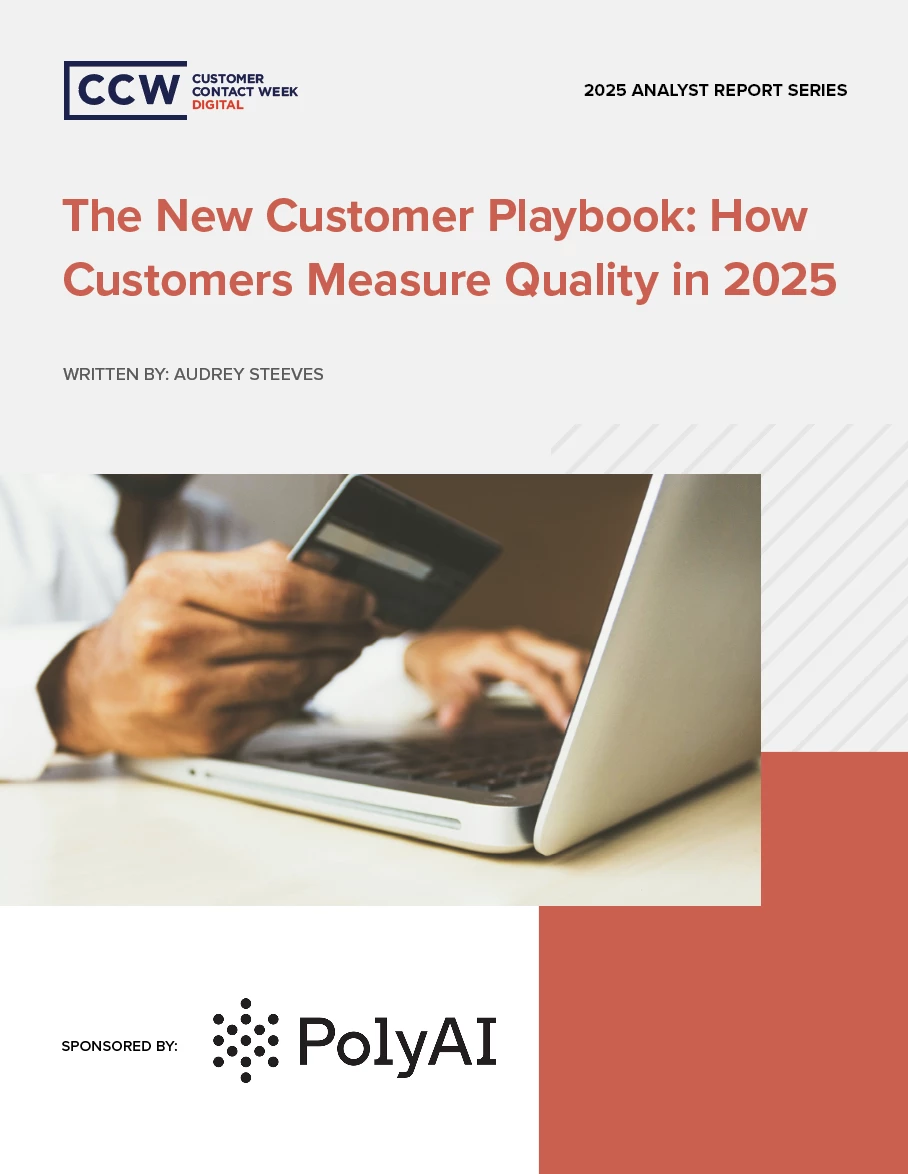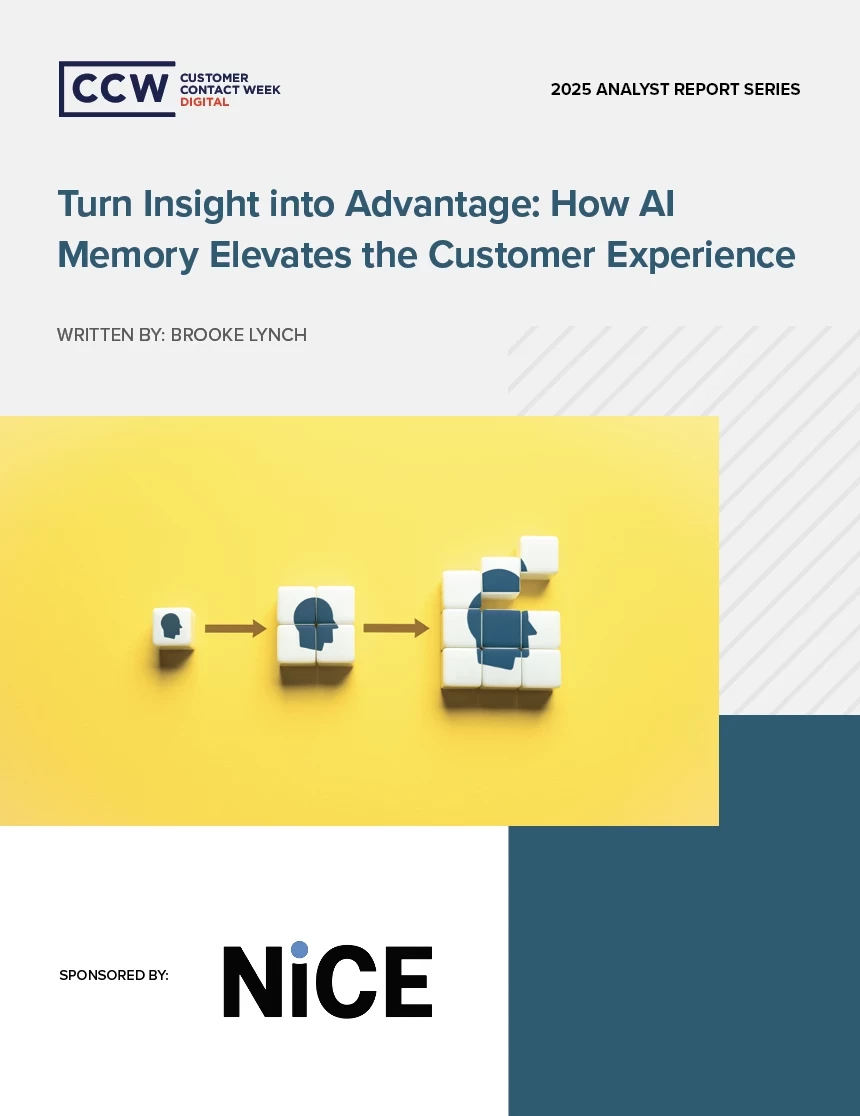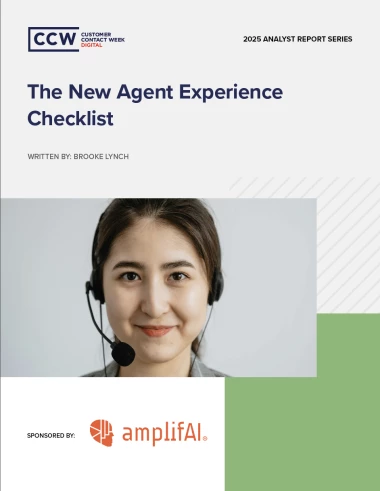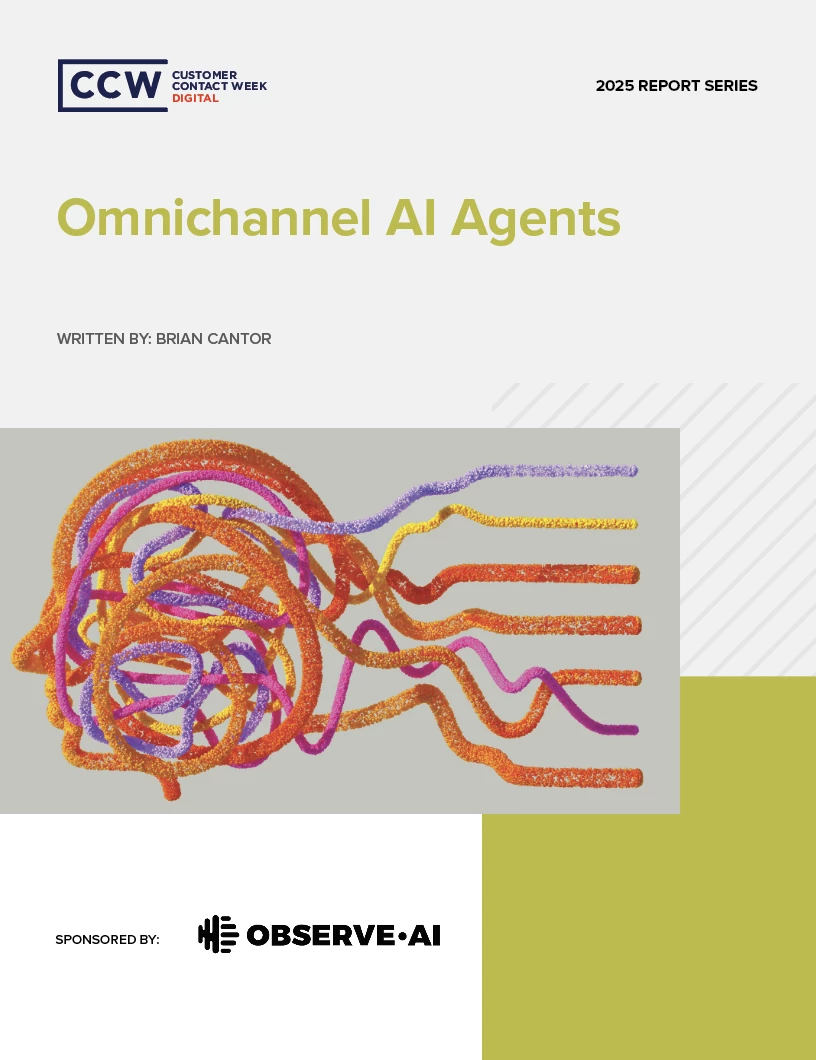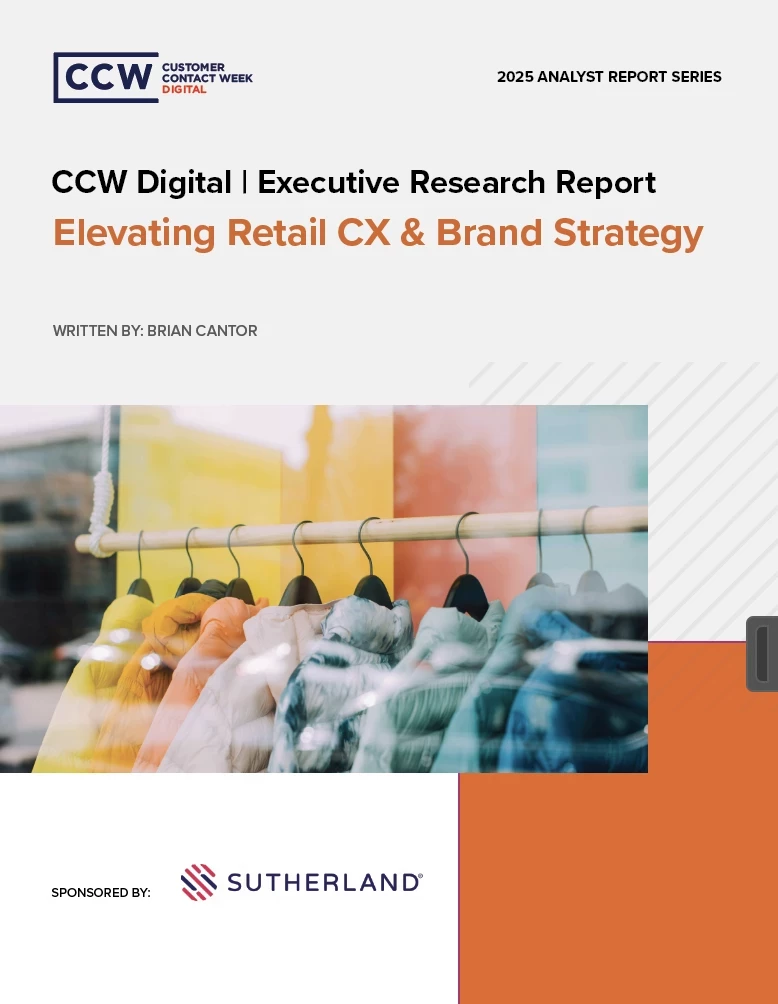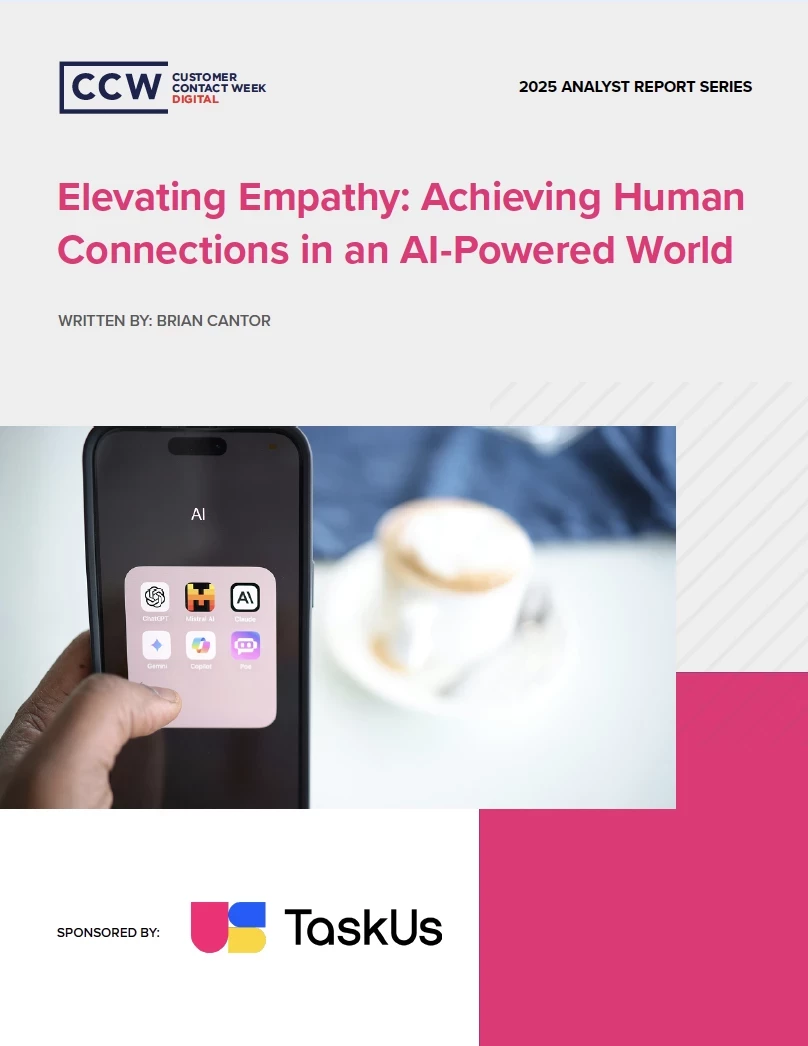To Better Serve Your Disabled Customers You Don’t Need More Technology, You Need More Transparency
For some customers with disabilities, standard CX solutions may be creating bigger, more complicated problems. Effortlessness is a lovely concept to consider, but effort is what it takes to make your brand accessible for disabled people.
Add bookmark
When it comes to CX, an effortless, frictionless user experience is key to customer satisfaction and retention. When we think about the idea of “effortlessness,” we often think about the standard customer service pitfalls: long hold times, repeating the same information over and over, or struggling to speak to a real person on the customer support team. While these pain points are ones the customer experience industry is ever-looking to improve, they aren’t the only issues consumers face. Focusing on just the aforementioned issues implies that every customer your company has ever had, or will have in the future, is able-bodied and will always possess the capacity to use self-service tools and technology in a way that brings simplicity or ease to their customer experience. But for some customers with disabilities, standard CX solutions may be creating bigger, more complicated problems. Effortlessness is a lovely concept to consider, but effort is what it takes to make your brand accessible for disabled people.
In the rush to meet customer calls to improve service through personalization, the needs of disabled customers are falling through the cracks–and it's not going unnoticed. If companies want to succeed in understanding, addressing, and meeting consumer preferences and expectations, they have to be ready and willing to put all their cards out on the table. It all starts with understanding, championing and creating accessibility that accommodates flexibility.
But when I think about championing accessibility, it’s hard to think about companies, organizations, or conglomerates. I immediately think of individuals, advocates, and grassroots organizations who share their personal stories of being disabled or caring for loved ones who are. They are the ones whose voices companies need to hear and bring into their conversations on diversity and inclusion. In fact, I think of fellow writers like Elly Belle, people who do the research and speak on the issues that managers, CEOs and investors need to see to take their customer service to the next level.
Belle, a freelance journalist, writes frequently about the disabled community, and lists a host of technologies that can be helpful in this piece for Teen Vogue:
“...companies like Apple and Microsoft have rolled out a host of accessibility features to specifically aid disabled people…Google continues to expand their suite of accessibility features as well. Android Accessibility Suite, formerly known as Google Talkback, helps blind and visually impaired people navigate and interact with their device through vibrations and spoken feedback.
Google Assistant and Voice Access on Android phones also allow anyone using the device to interact with a voice operated interface to navigate instead of always needing to see or use a touchscreen.
Lookout by Google allows users to point their camera at things so that the phone can recognize them and audibly communicate what’s in the surrounding space. Now, with the rollout of the recent iOS updates, neurodivergent people who are overwhelmed by sensory surroundings will also be able to turn off background and environmental sounds.”
Belle, who is autistic, finds these tools personally helpful to their customer and user experience digitally, in-person and online. While many of these tools offer alternatives and even solutions to some customer service challenges faced by those who are disabled, they aren’t one-size-fits-all answers to the questions many disabled individuals have.
In order to understand the customer experience companies must first understand their customers, and in the case of customers who are disabled, the onus is on organizations to seek out that understanding with a necessary diligence. Per the CDC, 1 in 4 adults in the United States are living with a disability. The word “disability,” by clinical terms, cannot be easily defined as they disabilities vary by type, scope, severity, and impact to daily functioning:
- Limitations regarding mobility and movement
- Cognition, memory retention and/or decision making
- Independent living and the capacity to carry out tasks on one’s own
- Hearing impairment
- Blindness or loss of vision
- Self-care and the ability to bathe or dress
Dr. Kimberly Reyes-Giordano, a New York City based board certified behavior analyst and licensed psychologist of 17 years, has worked with clients across this broad spectrum of experiences, ranging from autism, attention deficit disorder, intellectual disabilities and speech delays to emotional disturbances and learning disabilities. She sees first hand how patients have an intricate relationship with their disability. “Depending on cognitive and expressive language skills some clients have been able to express their feelings regarding having a disability,” she tells CCW Digital. “Some were able to express acceptance, while others were frustrated with their impediments.”
Understanding customer concerns with empathy is key, and that’s something that goes for every person and every body. Being receptive to consumer needs and lived experiences is what will allow you to provide the most appropriate customer service to your clients. An individual who is austistic, an individual with cerebral palsy, an individual who is deaf, and an individual who suffers from dementia cannot and should not be regarded as part of a homogenous group for whom voice and audio technologies can mitigate their customer service concerns. They each address their needs differently, relate to their disability differently, and may want or require different tools and modes of access in order to utilize your company’s offerings to the fullest extent.
With the variety of technologies that are available to those with disabilities throughout their day-to-day life, few if any of these tools are centered around improving the customer experience specifically. A simple web engine search of “disabilities customer service” will reveal that although the topic is relevant to the CX space in theory, in practice it has proved difficult to achieve. While companies and organizations can follow advice on how to interact one-on-one with customers and find tips on how to optimize accessibility, there is a monumental gap between interpersonal agent/client engagement and the technology currently available to assist in improving CX for an individual with a disability. The broad definition of the term “disability” in and of itself plays a role in the inability to develop communication technology that suits all needs of disabled customers.
As we know in the field of the customer experience, forcing a catch-all system for consumer/agent communication just doesn’t do it, and disability advocates agree. Joe Reddington, a UK-based academic, grew up with a brother with life-threatening disabilities, who is non-communicative and physically impaired. Having seen his sibling lose out on opportunities to engage with the world around him, Reddington was moved to leave academia and founded The Open Voice Factory, a charity that provides free speech aid software to the public by converting communication boards into communication devices. “A single communication strategy does not work,” he tells CCW Digital. “It is not an effective way of doing it.” In his experience, on a business level people aren’t thinking about different avenues for access. “Allowing multiple things and letting them be different,” he says, is key to building a customisable customer experience that is inclusive of those with disabilities. “There are so many exceptions that people are not really thinking about.”
Reddington believes that forward thinking is one thing that can greatly improve the customer experience–for all people: “It’s not the case that there are disabled people and non-disabled people. There are disabled people and people who aren’t disabled yet,” he explains. “We’re all getting there.” If a company wants to be in the business of customer experience for the long haul, they must prepare themselves for a future when all of us will inevitably face some type of limitation that adversely affects our ability to use or purchase a product within the guidelines of the able-bodied status quo. While easily said, it’s not so easily done in the world of business. Investing in or developing new technologies is costly, and may assist a small number of clients. The decision to invest in supporting disabled customers is one that carries a social, political, and economic weight.
He gives an unexpected recommendation to companies looking to improve the accessibility of their product: “It’s pissing hard to build a business. There’s no one who owns a business who tells anyone else how to run a business. You know the 50 things you should be doing, and it’s hard. And that’s partly why, if I'm going to give any recommendations at all, it’s about taking things away, not adding them.”
The idea of accessibility will mean many different things to many different people who experience a disability. Perhaps a consumer needs an audio component to their customer experience, or a visual component, maybe they even need tools that help them connect their hearing aids or wheelchair to your product. Accessibility is an indeterminable double-edged sword: you want to give your customers every option available to them–chat bots, phone system, email, social media, in-person–but once you do, it’s no longer up to you to dictate the terms of the interaction. It’s up to them. By putting the power in the hands of the consumer to create their own unique customer experience, you empower them. But you can only do that for them if your customers know what they’re getting into. “Transparency lets people make their own decisions,” Redding explains. “The more you can put out about your business, the literally more accessible it is.” This may mean sharing a picture of your product or venue, showing a YouTube of someone using your merchandise, or clearly stating your communication options on your website and social media. “It’s about reducing that gap between your branding and reality so that you can be transparent,” he adds. What we must take away is the mystery of the customer experience, so that companies don’t end up taking away the agency of their customers.
For Keah Brown, an author and journalist, her agency is essential to her customer experience. “I was born with cerebral palsy. I’ve been disabled for 30 years,” she tells CCW. “Every single day, someone is misunderstanding or misconstruing it… It’s often never ending, even when it is subtle.” This experience is one that impacts not just her personal life but her consumer habits as well. “I have been followed around stores and asked for receipts when my white friends who were with me were not.” Cerebral palsy makes Brown unable to drive. As a result, she also does a lot of online shopping with accessible brands in mind. “There are brands who have created adaptive clothing lines–Target, Tommy Hilfiger, Open Style Lab and Zappos,” she says. “However, as far as non clothing companies, Microsoft is also accommodating.”
When asked about brands she thinks are missing the mark in terms of providing good customer service to disabled people, she names “nearly every other company… The fact is, we haven’t made much of any progress. Disabled people are not listened to or brought in rooms where decisions are made in 98% of companies with the exception of the above.” Of course, overt and covert hiring discrimination and failure to succssfully adopt DE&I initiatives are partly to blame for this, but there are other factors at play. “In business terms, it is very useful to consider disabled people, even if only in the theoretical sense,” says Reddington. “Any broad statement that someone makes, I can find you a guy to whom it does not apply… Whatever your position in politics, culture or anything else, there will be a disabled person who breaks that. There will be a disability issue that introduces some nuance.” With that knowledge on hand, having a diverse target audience top-of-mind in the boardroom and in company conversations, even if a disabled person is not on your staff, is paramount to increasing customer satisfaction.
“The most practical and probably important thing for companies to do would be to help staff recognize those individuals with disabilities so that they are aware and can tailor their customer service,” adds Dr. Reyes-Giordano. “Training on how different disabilities present themselves in an individual who may otherwise present as neurotypical would be invaluable.” Whether you are looking to improve your customer experience, support a non homogeneous community, or simply prepare for the future of customer service, considering your customers with disabilities is key. Take a moment this week to check out how your company stands in terms of transparency and accessibility. Can someone who requires additional assistance use your product, website or automated system? Does “checking the pulse” of your team include asking a disabled person their thoughts and opinions? Are multiple modes of communication clearly stated and available? And are you ready to invest in or research technology that can learn about, adapt to and understand the needs of those with disabilities?
If your answer is no, then it’s time to do some research.
Photo by Sigmund via Unsplash











